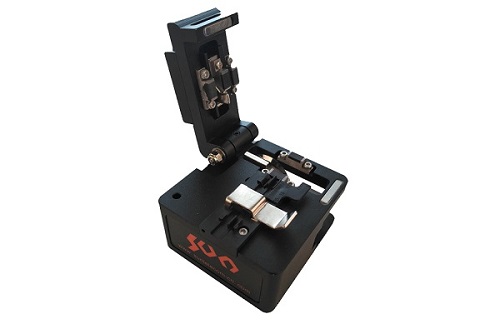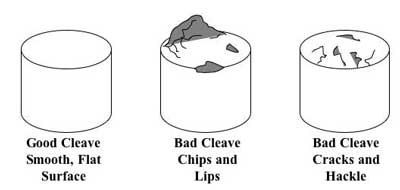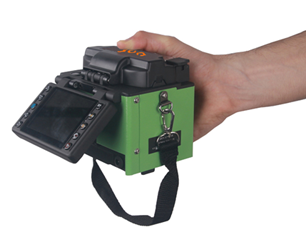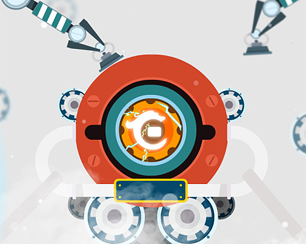As we know, in most cases, when a fiber is used or spliced, it is essential to prepare clean ends. Cleaving, an essential step of making fiber ends clean, though it's a simple mean, but it works surprisingly well, at least for standard glass fibers. Thus, I want to share something about the cleaving in this post today.
Understanding of Cleaving
Cleaving is one of the processes for termination or splicing. Simple to understand, it “cut” an optical fiber or makes it precisely broken, just like cutting glass plate. But it is different from the general concept “cut”, or perhaps, we may define it as a professional “cut technique” because fiber is cut by scoring or scratching the surface and applying stress so that the glass breaks in a smooth manner along the stress lines created by the scratch. With a properly well done cleaving, the fiber will cleave with a clean surface perpendicular to the length of the fiber, with no protruding glass on either end.
Cleaving Tool
Cleaver - If you have more experiences in the cleaving and splicing, you must know that a right cleaver helps cut out costly mistakes. The working principle of cleaver is very easy to understand. It first holds the fiber under low tension, scores the surface at the proper location and then applies greater tension until the fiber breaks. Automatic cleavers now are widely used because they can produce consistent results, irrespective of the operator. It is easy to use and does not need training. Users just need to clamp the fiber into the cleaver and operate its controls.
Why Is Proper Cleaving So Important?
To get good fiber optic splices or terminations, especially when using the pre-polished connectors with internal splices, it is extremely important to cleave the fiber properly. As we know, fiber splicing requires mating two fiber ends. Any defect of the ends would impact the performance of fiber splicing. For example, if the fiber ends are not precisely cleaved, the ends will not mate properly. Or if the cleaved ends are at an angle, there will be a gap between the fibers that will cause loss in a mechanical splice or uneven fusion splicing. In addition, if there is a protrusion, or lip, on one of the fibers, the two fibers will not butt up against each other and if there are hackle or mist, the ends will reflect or diffuse light, also causing loss.


 Position :
Home>
News & Tutorial
>Products
Position :
Home>
News & Tutorial
>Products


 Position :
Home
>Products
Position :
Home
>Products


 ics@suntelecom.cn
ics@suntelecom.cn  +86 18964888554
+86 18964888554 Building No.145, Lane 666 Xianing Road, Jinshan Industrial Zone, Shanghai 201506, China
Building No.145, Lane 666 Xianing Road, Jinshan Industrial Zone, Shanghai 201506, China